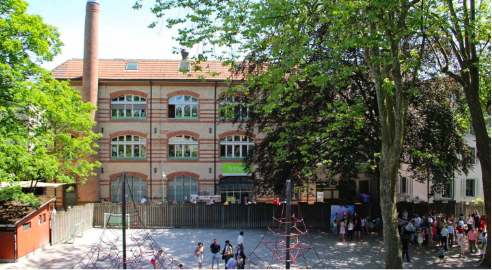Finding student housing used to mean scanning newspaper ads and calling dozens of landlords, hoping someone would actually pick up the phone. Those days are long gone. Today’s students hunt for apartments through specialized platforms that pack serious tech under the hood – GPS mapping, encrypted messaging, and algorithms that can spot scammers from miles away.
But even the fanciest platforms hit snags sometimes. Students searching for housing near smaller colleges often run into technical hiccups where the system displays “no location found“errors, especially around newer dormitory complexes or off-campus areas that haven’t been properly mapped yet. It’s frustrating when you’re trying to find a place within walking distance of your chemistry lab, only to have the technology fail right when you need it most.
The whole housing search game has become surprisingly sophisticated. What started as simple classified ads has evolved into complex ecosystems where artificial intelligence helps match students with landlords, and where every message gets encrypted like it’s containing state secrets.
How Modern Mapping Actually Works

The mapping technology behind these platforms goes way beyond dropping pins on a map. Students can search for housing based on actual walking times to specific campus buildings, factoring in things like winter weather conditions and construction detours that might add extra minutes to daily commutes.
Some platforms have gotten clever about transit integration. They pull live data from bus systems and subway networks, so students can see how long their commute will actually take during rush hour versus weekend mornings. The really advanced ones even account for how bus schedules change during finals week when everyone’s camping out in the library.
Property locations get analyzed from multiple angles too. The platforms don’t just show where apartments are located – they create detailed neighborhood profiles that include everything from crime statistics to the density of coffee shops per square block. Students can filter searches based on proximity to grocery stores, medical clinics, or late-night food options that become crucial during exam seasons.
Interactive maps let students draw custom search zones around campus. Some want to live within a five-minute bike ride of the engineering building, while others prioritize being near the medical center or arts district. Heat maps show rental price variations across different neighborhoods, making it obvious which areas offer the best value for students on tight budgets.
Keeping Students Safe Online
Student housing platforms have become surprisingly paranoid about security, and for good reason. College students make attractive targets for scammers who know they’re often handling large sums of financial aid money while lacking experience with rental markets.
Identity verification has gotten pretty thorough. Landlords can’t just create accounts and start messaging students anymore. They need to submit government IDs, prove they actually own the properties they’re advertising, and sometimes even pass background checks before gaining platform access.
The messaging systems encrypt everything automatically. Students and landlords can exchange sensitive information like Social Security numbers or bank details without worrying about hackers intercepting the data. The encryption happens behind the scenes, so users don’t need to understand the technical details to benefit from the protection.
Automated monitoring scans every conversation for red flags that might indicate fraud attempts. The systems have learned to recognize common scam patterns – urgent requests for wire transfers, prices that seem too good to be true, or landlords who push students to communicate outside the platform where there’s no oversight.
When something seems fishy, students can report problems while the platform automatically preserves conversation logs for review. Depending on the severity of violations, problematic users might get warnings, temporary suspensions, or permanent bans from the service.

What Students Actually Get
Modern housing platforms have moved far beyond basic search functionality. Students can specify detailed requirements that would have been impossible to filter for in newspaper classified ads – things like pet policies, furnished versus unfurnished options, or lease terms that align with academic calendars.
Virtual tours have become standard, which proved incredibly valuable during pandemic lockdowns when students couldn’t visit properties in person. High-definition photos, 360-degree room views, and guided video walkthroughs help international students make informed decisions about housing they’ve never physically seen.
The application process has gone mostly digital too. Students can submit documents, coordinate background checks, and even sign leases electronically. This eliminates postal delays that used to cause students to lose desirable properties while paperwork traveled back and forth.
Review systems provide transparency that didn’t exist in traditional rental markets. Previous tenants can warn future renters about problematic landlords, heating systems that break down every winter, or neighborhoods that get uncomfortably loud on weekends. The platforms verify that reviewers actually lived in the properties they’re commenting on, preventing fake testimonials.


